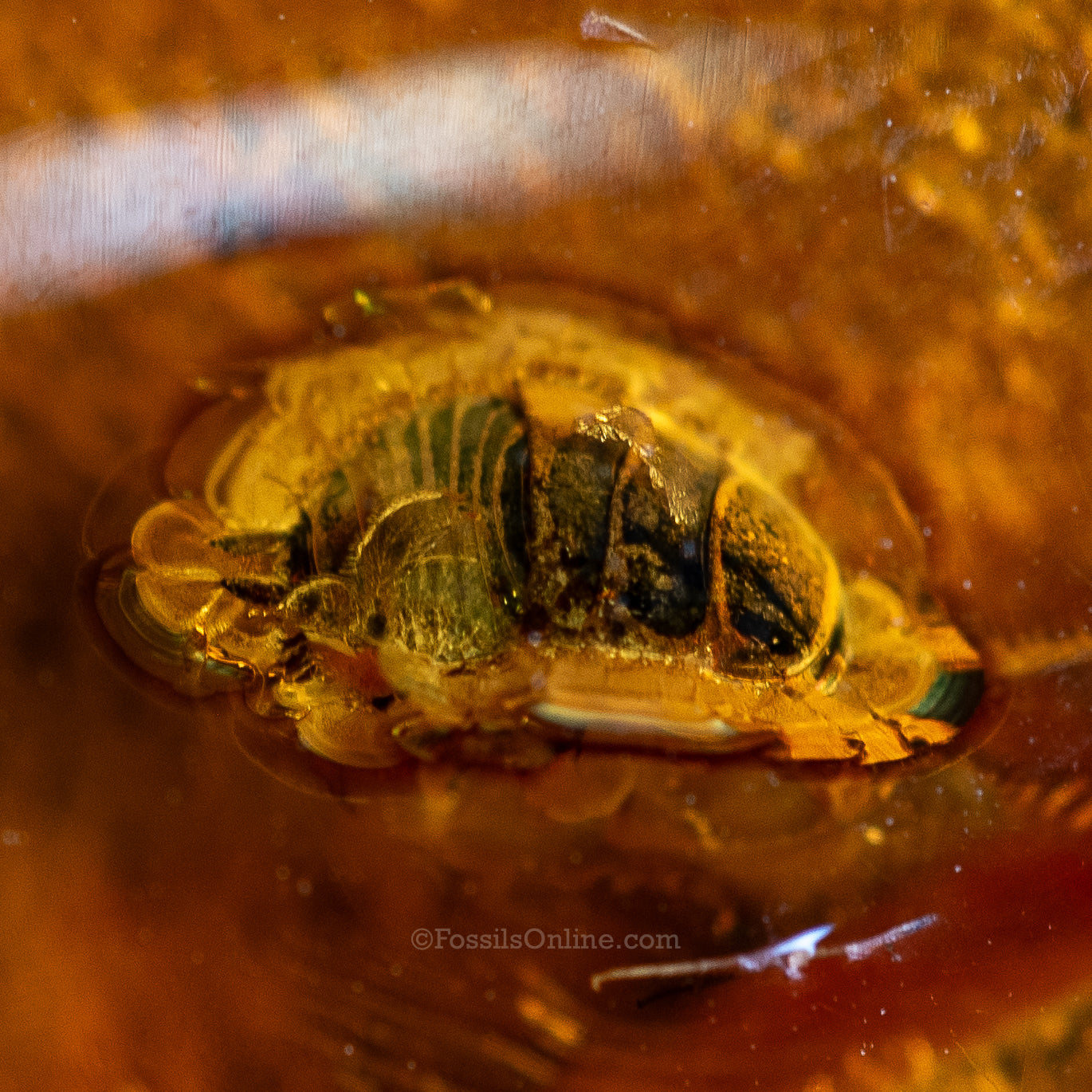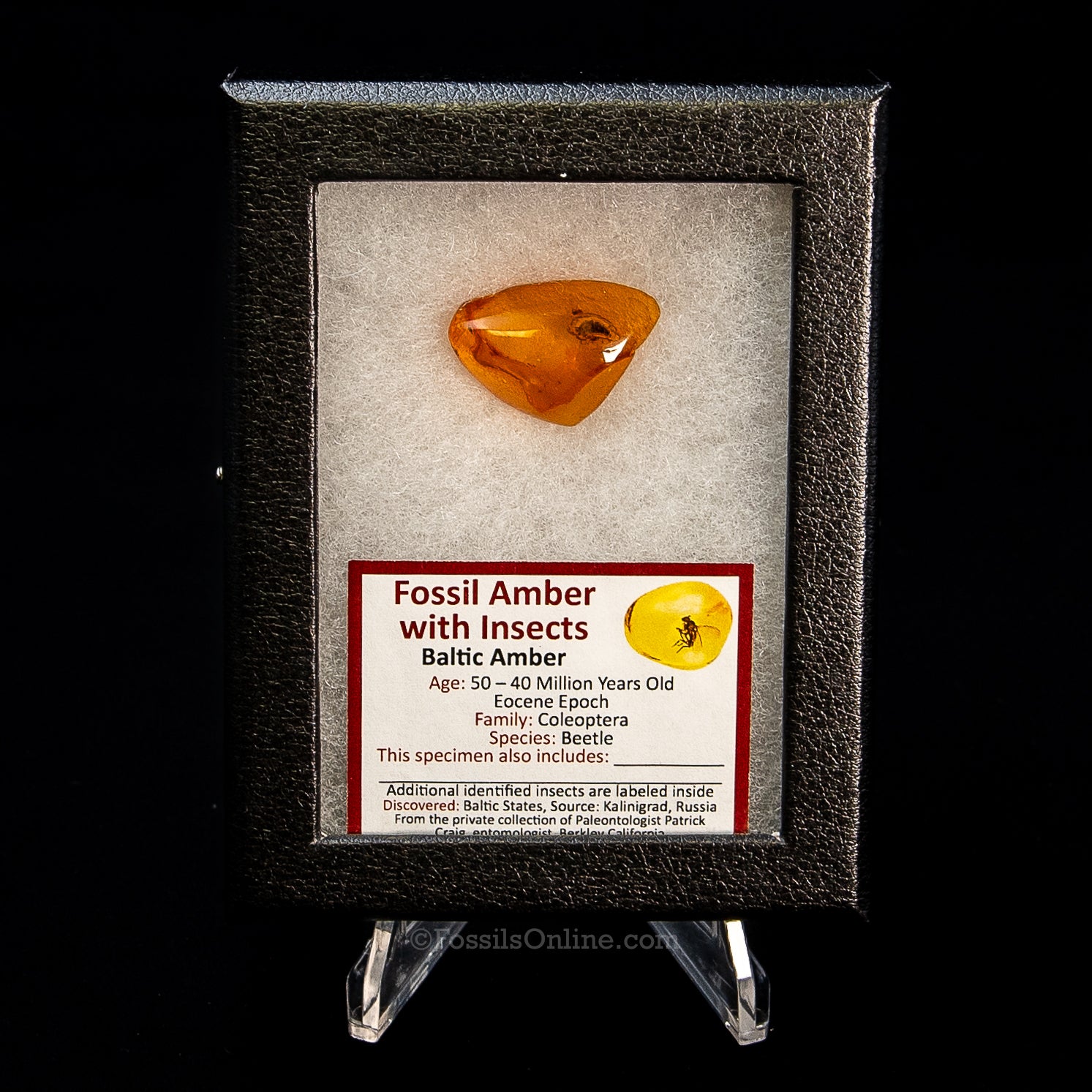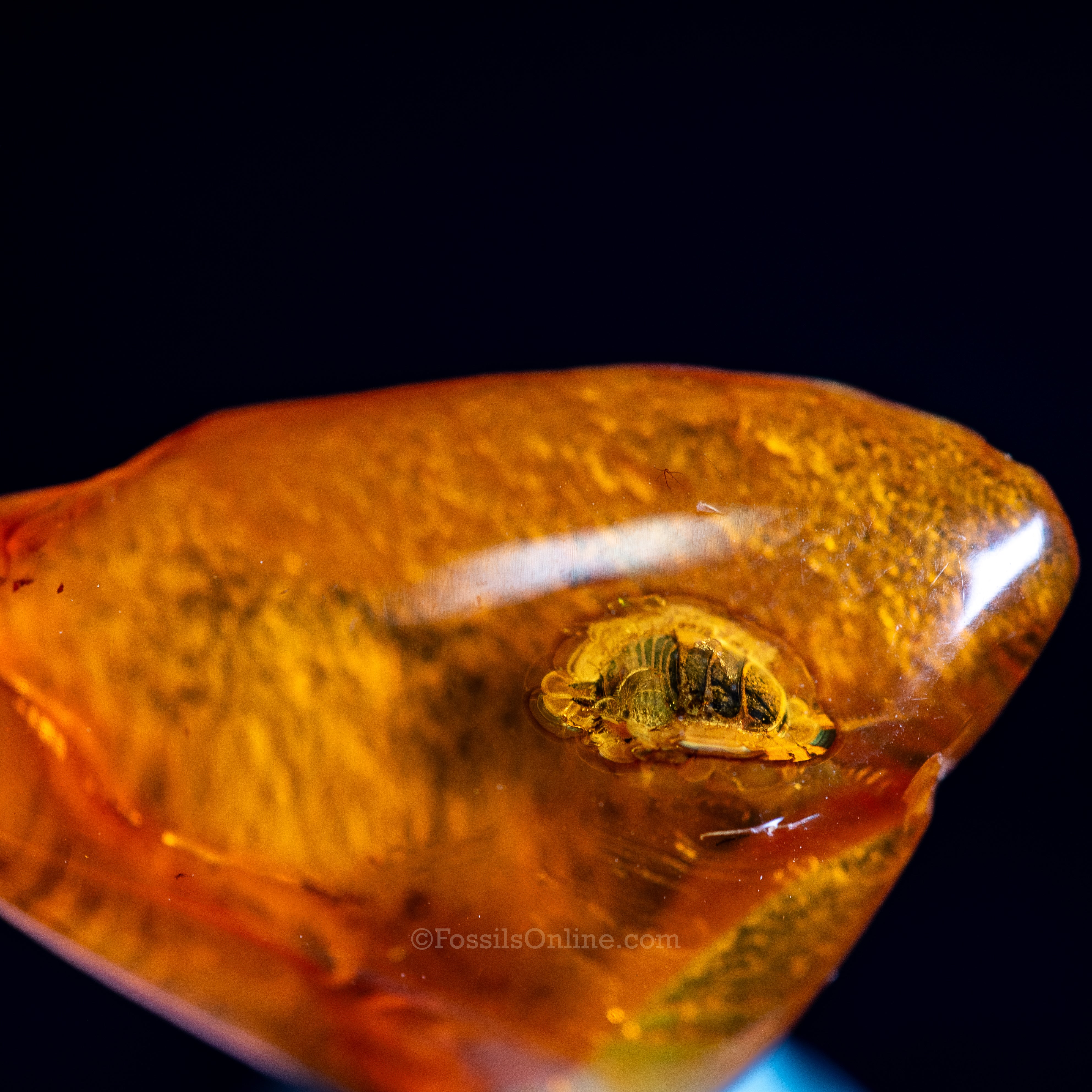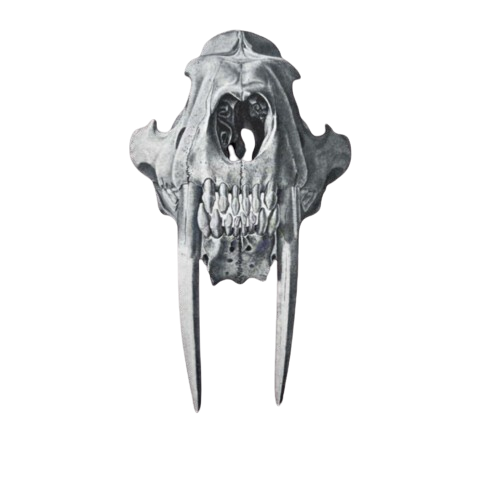


Dinosaur Age Amber with a Beetle (Order: Coleoptera)
An exceptionally well-preserved prehistoric beetle from the order Coleoptera. The beetle’s segmented body, hardened exoskeleton, and characteristic elytra (wing covers) are still clearly visible—captured in exquisite detail through the fossilized resin.
Beetles are one of the most diverse and successful groups of insects, and this ancient relative would have thrived in the humid Eocene forests of prehistoric Europe. This specimen offers a rare glimpse into the evolutionary past of an insect lineage that remains dominant to this day.
This genuine Baltic amber is between 40–50 million years old, originating from the famed deposits of Kaliningrad, Russia. Encased within the golden resin are prehistoric insects, preserved in stunning detail. From an old collection of entomologist Patrick Craig of Berkeley, California. Each specimen has been professionally photographed and enlarged to reveal the delicate features of these ancient creatures.
The process begins when the trees secrete sticky resin—often as a natural defense against injury or insect infestation. While still fresh and viscous, the resin would occasionally trap small organisms such as insects, spiders, or plant material. Once stuck, these creatures were quickly entombed, preventing decay by sealing them off from air and microorganisms.
Over time, the resin hardened and was buried under layers of sediment. Through millions of years of pressure, heat, and chemical changes, it underwent a process called polymerization, gradually transforming into amber. Because the resin preserved the entrapped organisms in fine detail, Baltic amber often contains remarkably well-preserved prehistoric life, offering scientists an invaluable window into ancient ecosystems.
Displayed in a 4.5"x3.25 case.
Size
1.09" wide
Choose options



